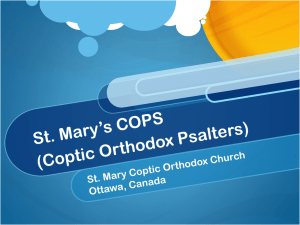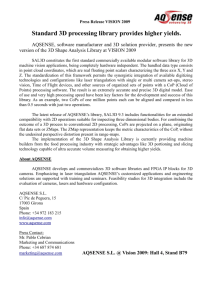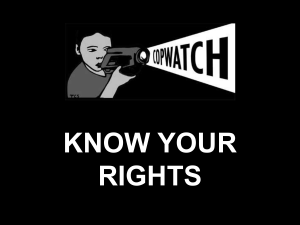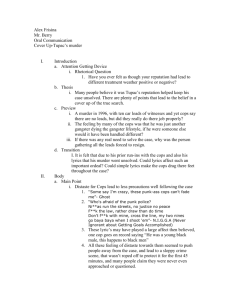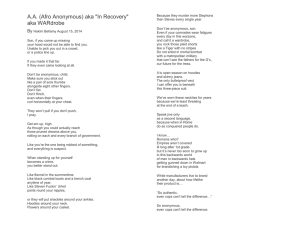Cholesterol and Lipid Oxidation Products in Packaging and Irradiation and by
advertisement
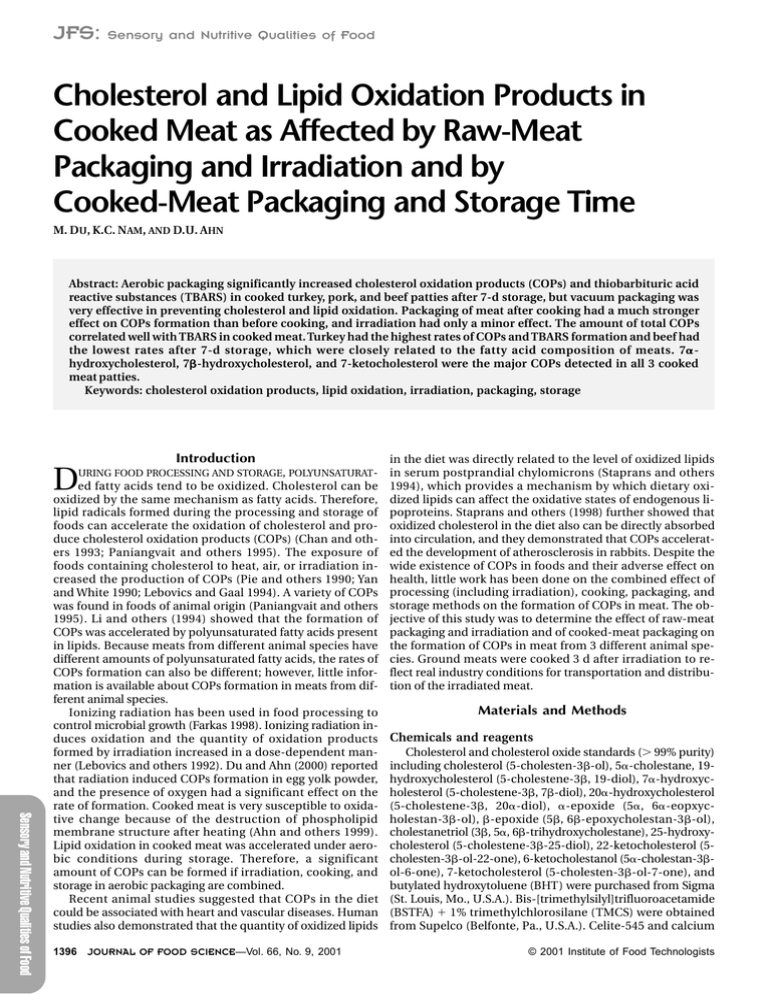
JFS: Sensory and Nutritive Qualities of Food Cholesterol and Lipid Oxidation Products in Cooked Meat as Affected by Raw-Meat Packaging and Irradiation and by Cooked-Meat Packaging and Storage Time M. DU, K.C. NAM, AND D.U. AHN Abstract: Aerobic packaging significantly increased cholesterol oxidation products (COPs) and thiobarbituric acid reactive substances (TBARS) in cooked turkey, pork, and beef patties after 7-d storage, but vacuum packaging was very effective in preventing cholesterol and lipid oxidation. Packaging of meat after cooking had a much stronger effect on COPs formation than before cooking, and irradiation had only a minor effect. The amount of total COPs correlated well with TBARS in cooked meat. Turkey had the highest rates of COPs and TBARS formation and beef had athe lowest rates after 7-d storage, which were closely related to the fatty acid composition of meats. 7a b -hydroxycholesterol, and 7-ketocholesterol were the major COPs detected in all 3 cooked hydroxycholesterol, 7b meat patties. Keywords: cholesterol oxidation products, lipid oxidation, irradiation, packaging, storage Introduction D URING FOOD PROCESSING AND STORAGE, POLYUNSATURAT- Sensory and Nutritive Qualities of Food ed fatty acids tend to be oxidized. Cholesterol can be oxidized by the same mechanism as fatty acids. Therefore, lipid radicals formed during the processing and storage of foods can accelerate the oxidation of cholesterol and produce cholesterol oxidation products (COPs) (Chan and others 1993; Paniangvait and others 1995). The exposure of foods containing cholesterol to heat, air, or irradiation increased the production of COPs (Pie and others 1990; Yan and White 1990; Lebovics and Gaal 1994). A variety of COPs was found in foods of animal origin (Paniangvait and others 1995). Li and others (1994) showed that the formation of COPs was accelerated by polyunsaturated fatty acids present in lipids. Because meats from different animal species have different amounts of polyunsaturated fatty acids, the rates of COPs formation can also be different; however, little information is available about COPs formation in meats from different animal species. Ionizing radiation has been used in food processing to control microbial growth (Farkas 1998). Ionizing radiation induces oxidation and the quantity of oxidation products formed by irradiation increased in a dose-dependent manner (Lebovics and others 1992). Du and Ahn (2000) reported that radiation induced COPs formation in egg yolk powder, and the presence of oxygen had a significant effect on the rate of formation. Cooked meat is very susceptible to oxidative change because of the destruction of phospholipid membrane structure after heating (Ahn and others 1999). Lipid oxidation in cooked meat was accelerated under aerobic conditions during storage. Therefore, a significant amount of COPs can be formed if irradiation, cooking, and storage in aerobic packaging are combined. Recent animal studies suggested that COPs in the diet could be associated with heart and vascular diseases. Human studies also demonstrated that the quantity of oxidized lipids 1396 JOURNAL OF FOOD SCIENCE—Vol. 66, No. 9, 2001 in the diet was directly related to the level of oxidized lipids in serum postprandial chylomicrons (Staprans and others 1994), which provides a mechanism by which dietary oxidized lipids can affect the oxidative states of endogenous lipoproteins. Staprans and others (1998) further showed that oxidized cholesterol in the diet also can be directly absorbed into circulation, and they demonstrated that COPs accelerated the development of atherosclerosis in rabbits. Despite the wide existence of COPs in foods and their adverse effect on health, little work has been done on the combined effect of processing (including irradiation), cooking, packaging, and storage methods on the formation of COPs in meat. The objective of this study was to determine the effect of raw-meat packaging and irradiation and of cooked-meat packaging on the formation of COPs in meat from 3 different animal species. Ground meats were cooked 3 d after irradiation to reflect real industry conditions for transportation and distribution of the irradiated meat. Materials and Methods Chemicals and reagents Cholesterol and cholesterol oxide standards (. 99% purity) including cholesterol (5-cholesten-3b-ol), 5a-cholestane, 19hydroxycholesterol (5-cholestene-3b, 19-diol), 7a-hydroxycholesterol (5-cholestene-3b, 7b-diol), 20a-hydroxycholesterol (5-cholestene-3b, 20a-diol), a-epoxide (5a, 6a-eopxycholestan-3b-ol), b-epoxide (5b, 6b-epoxycholestan-3b-ol), cholestanetriol (3b, 5a, 6b-trihydroxycholestane), 25-hydroxycholesterol (5-cholestene-3b-25-diol), 22-ketocholesterol (5cholesten-3b-ol-22-one), 6-ketocholestanol (5a-cholestan-3bol-6-one), 7-ketocholesterol (5-cholesten-3b-ol-7-one), and butylated hydroxytoluene (BHT) were purchased from Sigma (St. Louis, Mo., U.S.A.). Bis-[trimethylsilyl]trifluoroacetamide (BSTFA) 1 1% trimethylchlorosilane (TMCS) were obtained from Supelco (Belfonte, Pa., U.S.A.). Celite-545 and calcium © 2001 Institute of Food Technologists Cholesterol Oxidation Products in Irradiated Cooked Meat . . . phosphate (CaHPO4.2H2O) were purchased from Fisher (Fair Lawn, N.J., U.S.A.), and silicic acid (10 to 200 mesh) was from Aldrich (Milwaukee, Wis., U.S.A.). Hexane, ethyl acetate, ethyl ether, acetone, and methanol were high performance liquid chromatography (HPLC) grade. Solvent I (hexane:ethyl acetate = 9:1, vol/vol), solvent II (hexane:ethyl acetate = 4:1, vol/vol), and solvent III (acetone:ethyl acetate:methanol = 10:10:1, vol/vol/vol) were prepared and used for COPs preparation (Li and others 1996). Sample preparation the sample. Lipid sample dissolved in hexane (0.2 g) was loaded onto the silicic acid column. Neutral lipids were washed off by passing 40 mL of solvent II (hexane: ethyl acetate = 4:1, vol/vol) through the column. Then COPs were eluted with 40 mL of solvent III (acetone:ethyl acetate:methanol = 10:10:1, vol/vol/vol, 1 mL/min flow rate), collected in a glass vial (40 mL), and dried under nitrogen flow. The column was further washed with 20 mL methanol to wash off phospholipids remaining on the column. COPs were derivatized after adding 200 mL pyridine and 100 mL BSTFA 1 1% TMCS and set overnight. Analysis of COPs was performed with a Hewlett Packard (HP) 6890 GC equipped with an on-column capillary injector and flame ionization detector (FID; Hewlett Packard Co., Wilmington, Del., U.S.A.). A 30.0 m 3 320 mm 3 0.25 mm HP5 column (5% phenyl methyl silicon) (Hewlett Packard Co.) was used. A splitless inlet was used to inject samples (0.5 mL) into the capillary column using an autosampler (model 7683; Hewlett Packard Co.), and a ramped oven temperature was used (from 180 EC increased to 260 8C @ 8 8C/min, increased to 280 8C @ 2 8C/min, and held for 15 min). Inlet temperature was 290 8C and detector 300 8C. Helium was the carrier gas at a constant flow of 1.2 mL/min. Detector (FID) air, H2, and make-up gas (He) flow rates were 350 mL/min, 35 mL/ min, and 45 mL/min, respectively. The identification of COPs was confirmed with an MS detector (HP 5973 Mass Selective Detector; Hewlett Packard Co.) and COPs standards. The area of each peak (pA*s) was integrated by using the ChemStation software (Hewlett Packard Co.) and the amount of COPs was calculated using an internal standard (5a-cholestane) added at sample preparation. Analysis of cholesterol oxidation products (COPs) A column chromatography method was used for COPs preparation (Li and others 1996). A silicic acid (100 mesh), celite-545, and CaHPO4.2H2O (10:9:1, vol/vol/vol) mixture in chloroform was prepared and packed into a glass column (22 mm 3 30 cm with a sintered glass frit at the bottom) to a height of 10 cm. The column was washed with 20 mL hexane:ethyl acetate (9:1 vol/vol, solvent I) before loading Figure 1—Flow diagram of sample preparation procedure. The first letter indicates aerobic (A) or vacuum packaging (V) of raw meat before cooking; the second letter shows control (C) or irradiated (IR); the third letter represents air (A) or vacuum (V) packed after cooking. Vol. 66, No. 9, 2001—JOURNAL OF FOOD SCIENCE 1397 Sensory and Nutritive Qualities of Food Turkey thigh, pork lion, and ground beef were purchased from 4 different local grocery stores and meat from each store was used as a replication. Turkey thigh was deboned and then ground twice through a 9-mm plate, and pork lion was ground directly. Patties (approximately 100 g) were made using ground meats, packaged in either aerobic or vacuum bags (polyethylene vacuum bags, O2 permeability: 9.3 mL O2/m2/ 24 hr at 0 8C; Koch, Kansas City, Mo., U.S.A.), and irradiated using a linear accelerator (Circe Thomson CSF Linac, SaintAubin, France) with a dose of 0 or 4.5 kGy. For the dosage analysis, dosimeters (alanine) were placed on both sides of the packaging bags being irradiated, and the dosimeters were read using an Electroparamagnetic Resonance instrument (EMS104; Bruker Instruments Inc., Billerica, Mass., U.S.A.). After 3d storage at 4 8C, the meat patties were cooked in bags in an 85 8C water bath for 25 min. After cooling for 30 min at room temperature, the meat patties were repackaged either with oxygen-permeable or impermeable bags and then stored at 4 8C (Ahn and others 1998b). Samples were analyzed for COPs and thiobarbituric acid-reactive substances (TBARS) at 0 or 7 d after cooking and repackaging. Sample preparation proce- TBARS Analysis dure is shown in Figure 1. Three g meat was weighed into a 50-mL test tube and homogenized with 15 mL deionized distilled water using the Lipid extraction Polytron homogenizer for 10 s at highest speed. One mL Lipids were extracted from meat patties according to the meat homogenate was transferred to a disposable test tube method of Folch and others (1957). Five grams meat, BHT (3 3 100 mm), and butylated hydroxyanisole (50 mL, 7.2%) (50 mL, 7.2%), and Folch solution (CHCl 3:CH3OH = 2:1, 50 and thiobarbituric acid/trichloroacetic acid (TBA/TCA) (2 mL) were added to a 50-mL test tube and homogenized mL, 20 mM TBA in 15% of TCA) were added. The mixture (speed set at 7 to 8) for 20 s using a Polytron (Type PT 10/35; was vortexed and then incubated in a boiling water bath for Brinkman Instruments Inc., Westbury, N.Y., U.S.A.). The homogenate was set overnight and then filtered through a Whatman No. 1 filter paper into a 100-mL graduated cylinder (with glass stopper), rinsed twice with each 10 mL Folch 1 solution, added with 12 mL of 0.88% NaCl solution, stoppered, and mixed. The inside of the cylinder was washed twice with 2 mL of Folch 2 solution (3:47:48/ CHCl 3:CH3OH:H2O). After the phase separation, the lipid layer volume was recorded, and the top layer (methanol and water) of the solution was completely and carefully siphoned off so as not to contaminate the CHCl 3 layer. The organic layer was put in a glass scintillation vial and dried in a block heater (1 h at 50 8C) under nitrogen flow. The dried lipid was dissolved with hexane to make 0.1 g fat/mL hexane and used for the next step. Cholesterol Oxidation Products in Irradiated Cooked Meat . . . Table 1—Effect of raw-meat packaging and irradiation and of cooked-meat packaging conditions on formation of cholesterol oxidation products (COPs) in cooked turkey meat during storage. Day 01 COPs V-IR-V V-IR-A A-C-V Day 7 A-IR-V A-C-A A-IR-A SEM V-IR-V V-IR-A A-C-V A-IR-V A-C-A A-IR-A SEM m g COPs/g lipid 7a- & b48.4b Hydroxychol. b-Epoxide 3.7 a-Epoxide 3.3b 20a-Hydroxychol. 0 Triol 2.3 7-Ketochol. 6.8c Total 66.4c 98.9a 88.3a 89.6a 62.2b 102.0a 6.7 74.3b 277.8a 113.0b 127.2b 282.2a 292.9a 19.4 10.5a 11.1ab 0 2.6 50.6a 174.2a 5.4bc 10.7ab 0 2.6 26.7b 136.2b 6.8b 15.1a 0 1.0 24.8b 137.8b 6.8b 5.4b 0 2.7 14.7c 93.1c 11.1a 0.6 16.3a 0 1.8 45.3a 176.3a 8.1c 1.8 0 1.1 3.3 9.8 19.2 abc 17.3bc 1.5 3.0 31.7c 136.0c 12.8bc 12.2c 2.5 5.0 135.5b 452.2b 14.9ab 24.0ab 2.1 3.0 45.3c 200.1c 22.1ab 29.0a 3.5 4.2 53.4c 232.1c 25.9a 16.3bc 2.8 4.4 149.8b 447.6b 3.1 29.0a 2.6 5.4 227.2a 583.2a 2.3 0.8 0.7 17.0 31.7 a-c Values with different superscript letters within a row of the same storage time are different (P , 0.05). n = 4. 1 Sampled 2 hr after cooking. * Abbreviation of treatments: A, aerobic packaging; V, vacuum packaging; C, control, nonirradiated; IR, irradiated at 4.5 kGy dose; chol., cholesterol; SEM, standard error of the mean. Table 2—Effect of raw-meat packaging and irradiation, and of cooked-meat packaging conditions on formation of COPs in cooked pork during storage. Day 01 COPs V-IR-V V-IR-A A-C-V Day 7 A-IR-V A-C-A A-IR-A SEM V-IR-V V-IR-A A-C-V A-IR-V A-C-A A-IR-A SEM m g COPs/g lipid 7a- and b1.7b Hydroxychol. b-Epoxide 0b a-Epoxide 3.2 20a-Hydroxychol. 2.9 Triol 2.2 7-Ketochol. 1.5c Total 11.4c 9.5a 8.1a 9.5a 6.3ab 10.5a 1.8 6.1c 99.0b 10.7c 13.8c 119.2a 109.5ab 4.8 0b 1.1 1.9 2.8 3.7c 19.0bc 0.7b 0.6 4.0 2.5 1.1c 15.7bc 0b 1.7 3.7 1.8 6.5 23.8ab 0b 1.0 3.5 2.6 2.4c 15.7bc 2.2a 3.2 1.7 4.0 10.1a 31.5a 0.4 1.0 1.4 1.2 0.9 3.2 2.6d 8.0b 2.5 1.5 9.6c 30.3b 29.7b 22.3a 15.5 6.5 131.3ab 294.3a 8.3d 16.1ab 3.7 3.6 12.7c 55.0b 4.1d 14.5ab 4.8 2.2 16.2c 55.6b 21.2c 21.9a 5.9 5.4 122.0b 295.5a 38.4a 25.0a 5.8 4.6 141.6a 324.8a 2.2 3.0 1.1 1.3 5.4 12.4 a-dValues with different superscript letters within a row of the same storage time are different (P , 0.05). 1 Sampled 2 hr after cooking. * Abbreviation of treatments: A, aerobic packaging; V, vacuum packaging; C, control, nonirradiated; IR, irradiated at 4.5 kGy dose; chol., cholesterol; SEM, standard error of the mean 15 min to develop color. Then the sample was cooled in cold water for 10 min, vortexed again, and centrifuged for 15 min at 2,000 3 g. The absorbance of the resulting supernatant solution was determined at 531 nm against a blank containing 1 mL deionized distilled water (DDW) and 2 mL TBA/TCA solution. When the absorbance was above 1.0, appropriate dilution was made to make the absorbance value lower than 1.0 by adding DDW and TBA/TCA solution at 1 to 2 ratio. The amounts of TBARS were expressed as milligrams of malondialdehyde per kilogram of meat. Statistical analysis Sensory and Nutritive Qualities of Food The effects of treatments on the COPs and TBARS data were analyzed statistically by GLM using SAS® software (SAS Institute 1985). The Student-Newman-Keuls’ multiple range test was used to compare differences among mean values (P , 0.05). Mean values and standard error of the mean (SEM) were reported. Results and Discussion T HE FAT CONTENTS OF TURKEY, BEEF, AND PORK PATTIES WERE 6.65, 8.27, and 9.38%, respectively. The fatty acid compositions of meat patties from the 3 animal species were significantly different. Turkey meat contained 26.16% of linoleic, 2.35% of linolenic, and 4.02% of arachidonic acid; pork had 16.96% of linoleic, 2.86% of linolenic, and 3.26% of arachidonic acid; and beef had 5.19% of linoleic, 1.34% of linolenic, 1398 JOURNAL OF FOOD SCIENCE—Vol. 66, No. 9, 2001 and 1.19% of arachidonic acid. Because the polyunsaturated fatty acids tend to be the most readily oxidized, the oxidation rates of lipids and cholesterol for those different patties were expected to be different. Figure 2 shows the gas chromatograms of COPs from turkey patties at d 0 and d 7 after storage in aerobic conditions. There was little interference in chromatograms, indicating that solvent II washing removed triglycerides effectively. Solvent III eluted COPs and free fatty acids from the column, and thus free fatty acids could be a source of interference. But, free fatty acids had shorter retention times compared with COPs and did not interfere with COPs peaks in the GC conditions described. Phospholipids are more polar than COPs and were removed from the silicic column by methanol washing. Higher amounts of COPs were detected in the d 7 sample than in the d 0 sample indicating that cholesterol oxidized rapidly during storage in aerobic conditions. Table 1 shows the COPs content of extracted lipid from turkey meat patties at 0 and 7-d storage. At d 0, the total COPs content of those patties packaged under aerobic conditions was higher than the content of those vacuum-packaged patties. This indicated that the packaging conditions of raw meat during the 3-d storage before cooking influenced the COPs formation. 7a- plus 7b-hydroxycholesterol were the major COPs detected in cooked turkey meat. After 7-d storage after cooking, many more COPs were formed in turkey meat. For A-IR-A, the amount of total COPs reached 583.2 Cholesterol Oxidation Products in Irradiated Cooked Meat . . . Table 3—Effect of raw-meat packaging and irradiation, and of cooked-meat packaging conditions on formation of COPs in cooked beef during storage. Day 01 COPs V-IR-V V-IR-A A-C-V Day 7 A-IR-V A-C-A A-IR-A SEM V-IR-V V-IR-A A-C-V A-IR-V A-C-A A-IR-A SEM m g COPs/g lipid 7a- & b10.6 Hydroxychol b-Epoxide 0.5 a-Epoxide 4.5b 20a-Hydroxychol 2.4 7-Ketochol. 8.1b Total 26.0b 16.1 14.2 14.2 12.5 14.3 3.62 1.5c 90.9b 24.6c 24.0c 79.1b 127.0a 10.3 1.2 12.5a 1.6 8.1b 39.4ab 0 6.5b 2.7 11.1b 34.5ab 2.8 17.1a 1.9 9.2b 45.2ab 0 5.6b 2.2 10.5b 32.7b 1.4 17.3a 2.1 15.7a 46.7a 0.9 1.5 1.2 1.9 5.6 0b 9.8ab 3.2 8.1c 42.6c 10.5a 10.0b 4.9 64.0ab 180.1b 0b 9.5a 3.1 9.8c 47.0c 0b 9.8ab 4.4 10.6c 48.7c 13.1a 11.4ab 1.1 46.6b 151.1b 17.3a 14.9a 5.8 70.0a 235.0a 2.0 2.3 1.2 6.0 15.0 a-c Values with different superscript letters within a row of the same storage time are different (P , 0.05). 1 Sampled 2 hr after cooking. * Abbreviation of treatments: A, aerobic packaging; V, vacuum packaging; C, control, nonirradiated; IR, irradiated at 4.5 kGy dose; chol., cholesterol; SEM, standard error of the mean ly packaged cooked turkey meat but had less effect on vacuum-packaged patties. The content of 7a- plus 7b-hydroxycholesterol in A-IR-A turkey meat was 292.9 mg/g, and that of 7-ketocholesterol was 227.2 mg/g. These 2 COPs were the main COPs existing in cooked turkey meat patties after 7-d storage and the amount of 7-ketocholesterol increased rapidly during storage. Angulo and others (1997) also reported that 7-ketocholesterol was the main cholesterol oxide formed in milk powder after storage. In addition, significant amounts of a- and b-epoxides existed in both vacuum- and aerobically packaged cooked turkey meat patties. At d 0, the content of COPs in pork patties packaged in aerobic conditions before cooking was higher than the content of those under vacuum, showing that the packaging condition before cooking influenced the COPs formation in cooked pork (Table 2). Irradiation had no effect on the content of COPs in cooked pork patties at 0 d. After 7-d storage, there were only small increases in COPs for the vacuumpackaged patties; however, about a 10-fold increase in COPs was observed in the cooked pork patties with aerobic packaging. For A-IR-A pork, the amount of total COPs increased from 31.5 mg/g of lipid to 324.8 mg/g during the 7-d storage. The results from both turkey and pork patties indicated that the packaging condition of meat after cooking is the most important factor for the formation of COPs in cooked meat. Again, 7a- plus 7b-hydroxycholesterol and 7-ketocholesterol (109.5 and 141.6 mg/g of lipid, respectively) were the main COPs formed in aerobically packaged cooked pork after 7-d storage. Significant amounts of a- and b-epoxides also were detected in cooked pork at d 7. The overall pattern of changes in COPs in cooked beef was similar to those of the turkey and pork, but the amounts were lower than for pork and turkey meat after 7-d storage (Table 3). Large amounts of COPs were formed after 7-d storage under aerobic conditions. Kesava-Rao and others (1996) reported that COPs increased in water buffalo meat during storage. Irradiation had no significant influence on COPs formation. The lower COPs content in beef patties than in the turkey and pork might be associated with its lower polyunsaturated fatty acid content. Beef contained far less PUFA than turkey and pork, and turkey had higher PUFA than pork. The amount of total COPs in pork patties is lower than in turkey patties, indicating that PUFA promoted the Figure 2—Gas chromatographic profiles of COPs from cooked turkey patties (A-C-A) analyzed at 0- and 7-d stor- oxidation of cholesterol. This result was in agreement with age after cooking. A splitless inlet was used to inject that of Li and others (1996) who found that PUFA promoted samples (0.5 mL) into a capillary column (HP-5 column, 30.0 the oxidation of cholesterol. m 3 320 m m 3 0.25 m m) using an autosampler. Table 4 shows the TBARS values of meats from all 3 aniVol. 66, No. 9, 2001—JOURNAL OF FOOD SCIENCE 1399 Sensory and Nutritive Qualities of Food mg/g of extracted lipid, a level close to that in our previous report (Ahn and others 1998a). There was a large difference in COPs content between vacuum- and aerobically packaged, cooked turkey meat after 7-d storage. Only a small change in the amount of COPs was found in cooked turkey meat with vacuum packaging, but a dramatic increase in COPs was observed in aerobically packaged cooked turkey meat. This indicated that packaging after cooking was the most important factor influencing COPs formation in turkey meat. Guardiola and others (1997) showed that vacuum packaging was highly effective in preventing spray-dried egg from oxidative changes during storage. Hwang and Maerker (1993) reported that irradiation increased COPs formation in meat. Irradiation influenced the formation of COPs in aerobical- Cholesterol Oxidation Products in Irradiated Cooked Meat . . . Table 4—Effect of raw-meat packaging and irradiation, and of cooked-meat packaging conditions on the TBARS of cooked turkey leg, pork, and beef. Turkey Treatment D 01 D7 Pork SEM D 01 0.13 0.21 0.05 0.16 0.52 0.48 0.91c 1.25cy 1.08c 1.85b 1.41cy 2.36ay 0.13 D7 Beef SEM D 01 0.09 0.30 0.11 0.18 0.24 0.20 0.94 0.93y 1.09 1.12 1.07y 1.18y 0.15 D7 SEM mg MA/kg meat V-IR-V* V-IR-A A-C-V A-IR-V A-C-A A-IR-A SEM 3.03by 2.55cy 4.00ay 3.78ay 3.95ay 3.96ay 0.12 6.84bx 11.66 ax 7.36bx 6.62bx 12.69 ax 11.70 ax 0.43 0.75c 6.06ax 1.22c 2.00b 6.02ax 6.71ax 0.26 1.09c 5.54ax 1.32c 1.40c 4.84abx 4.09bx 0.36 0.17 0.36 0.21 0.18 0.15 0.43 a-c Values with different superscript letters within a column are different (P , 0.05). x,y Values with different superscript letters within a row of the same meat are different (P , 0.05). 1 Sampled 2 hr after cooking. * Abbreviation of treatments: A, aerobic packaging; V, vacuum packaging; C, control, nonirradiated; IR, irradiated at 4.5 kGy dose; SEM, standard error of the mean holesterol in meat patties has health implications. Studies have shown that the intestinal absorption rates of various COPs are different; 7a- and 7b-hydroxycholesterols have Correlation Significance Regression Significance high absorption rates (Vine and others 1997). Lyons and others (1999) showed that 7-ketocholesterol could be associated Turkey 0.93 0.0001 37.92 0.0001 with the initiation and development of atherosclerosis in aniPork 0.90 0.0001 37.43 0.0001 mals. Vine and others (1998) reported that COPs were abBeef 0.98 0.0001 44.27 0.0001 sorbed, incorporated into LDL, and formed mildly oxidized low-density lipoprotein (LDL). Mildly oxidized LDL could be the key to atherosclerosis development because it could induce endothelial cells to secret monocyte-adhesion factors mal species. The TBARS value for turkey patties was much that attract monocytes and form local inflammation and inhigher than that of the beef or the pork because TBARS were duce atherosclerosis (Drake and others 1991; Navab and othmainly formed from PUFA. At d 0, the TBARS of aerobically ers 1995). packaged turkey and pork patties were significantly higher Conclusion than those of the vacuum-packaged, but not for beef. After 7-d storage, the TBARS of both vacuum- and aerobically ARGE AMOUNTS OF COPS COULD BE FORMED IN MEAT DURpackaged cooked turkey increased significantly. Only small ing processing and storage. Packaging of meat after cookchanges in TBARS were observed in cooked beef and pork ing was the most important factor affecting the production patties with vacuum packaging. But under aerobic packag- of COPs in meat during storage. Vacuum packaging of ing, large increases in TBARS were observed for all the cooked meat effectively reduced the formation of COPs durcooked meat from the 3 animal species. Irradiation had no ing storage. Packaging conditions of raw meat before cooksignificant effect on TBARS (Table 4) of all 3 cooked meats. ing and fatty acid composition of meat also influenced the Galvin and others (1998) also showed that 4.0 kGy irradiation amounts of COPs in cooked meat, but irradiation had little had little effect on the lipid stability of meat following cook- impact on the formation of COPs in cooked meat. ing and storage. TBARS correlated well with the amounts of References COPs formed and the results were in good agreement with those of others (Angulo and others 1997; Galvin and others Ahn DU, Jo C, Olson DG. 1999. Headspace oxygen in sample vials affects volatiles production of meat during the automated purge-and-trap/GC analyses. J 1998). Agric Food Chem 47:2776-2781. The correlations between COPs and TBA were very high: Ahn DU, Lee JI, Jo C, Sell JL. 1998a. Analysis of cholesterol oxides in egg yolk and turkey meat. Poultry Sci 78:1060-1064. 0.93, 0.90, and 0.98 for turkey, pork, and beef, respectively Ahn DU, Olson DG, Lee JI, Jo C, Wu C, Chen X. 1998b. Packaging and irradiation (Table 5). The high correlation between COPs and TBARS ineffects on lipid oxidation and volatiles in pork patties. J Food Sci 63:15-19. dicated that COPs formed in meat during processing and Angulo AJ, Romera JM, Ramirez M, Gil A. 1997. Determination of cholesterol oxides in dairy products. Effect of storage conditions. J Agric Food Chem 45:4318storage can be predicted from the TBARS values. Regression 4323. analysis showed that factors 37.92, 37.43, and 44.27 could be Chan SH, Gray JI, Gomaa EA, Harte BR, Kelly PM, Buckley DJ. 1993. Cholesterol oxidation in whole milk powders as influenced by processing and packaging. used for calculation of COPs amount (mg COPs/g lipid) Food Chem 47:321-328. through multiplying TBARS values with those factors, with Drake TA, Hannani K, Fei HH, Lavi S, Berliner JA. 1991. Minimally oxidized lipoprotein induced tissue factor expression in cultured human endothelial an average of 39.87 (Table 5). The difference in factors for cells. Am J Pathol 138:601-607. different meats might be due to the difference in fatty acid Du M, Ahn DU. 2000. Effects of antioxidants and packaging on lipid and cholesterol oxidation and color changes of irradiated egg yolk powder. J Food Sci 65: composition. 625-629. The results of this study indicated that a large amount of Farkas J. 1998. Irradiation as a method for decontaminating food. Intl J Food COPs could be formed in meat after processing and storage. Microbiol 44:189-204. Folch J, Lees M, Sloan-Stanley GH. 1957. A simple method for the isolation and Packaging was the most significant factor influencing COPs purification of total lipids from animal tissues. J Biol Chem 226:497-507. formation and lipid oxidation in cooked meat. The COPs Galvin K, Morrissey PA, Buckley DJ. 1998. Effect of dietary alpha-tocopherol supplement and gamma-irradiation on alpha-tocopherol retention and lipid produced in meat patties during cooking and storage were oxidation in cooked minced chicken. Food Chem 62:185-190. mainly 7a-hydroxycholesterol, 7b-hydroxycholesterol, and Guardiola F, Codony R, Rafecas M, Grau A, Jordan A, Boatella J. 1997. Oxysterol 7-ketocholesterol. The dominance of 7a- and 7b-hydroxycformation in spray-dried egg processed and stored under various conditions: Table 5—Correlation and regression coefficients for COPs as compared with TBARS of turkey, pork, and beef patties. L Sensory and Nutritive Qualities of Food 1400 JOURNAL OF FOOD SCIENCE—Vol. 66, No. 9, 2001 Cholesterol Oxidation Products in Irradiated Cooked Meat . . . Pie JE, Spahis K, Seillan C. 1990. Evaluation of oxidative degradation of cholesterol in food and food ingredients: identification and quantification of cholesterol oxides. J Agric Food Chem 38:973-979. SAS® Institute, 1985. SAS User’s Guide. SAS Institute, Inc., Cary, N.C. Staprans I, Pan XM, Rapp JH. 1998. Oxidized cholesterol in the diet accelerates the development of aortic atherosclerosis in cholesterol-fed rabbits. Arterioscler Thromb Vascul Biol 18:977-983. Staprans I, Rapp XM, Pan XM. 1994. Oxidized lipids in the diet are a source of oxidized lipid in chylomicrons of human serum. Arterioscler Thromb 14:19001905. Vine DF, Croft KD, Beilin LJ, Mamo JC. 1997. Absorption of dietary cholesterol oxidation products and incorporation into rat lymph chylomicrons. Lipids 32:887-893. Vine DF, Mamo CL, Beilin LJ, Mori TA, Croft KD. 1998. Dietary oxysterols are incorporated in plasma triglyceride-rich lipoproteins, increase their susceptibility to oxidation and increase aortic cholesterol concentration of rabbits. J Lipid Res 39:1995-2004. Yan PS, White PJ. 1990. Cholesterol oxidation in heated lard enriched with two levels of cholesterol. J Amer Oil Chem Soc 67:927-931. MS 20000745 This work was supported by S-292 Regional Project and the Iowa Egg Council. The authors are with the Dept. of Animal Science, Iowa State Univ., Ames, IA 50011-3150. Direct inquiries to Author Ahn (E-mail: duahn@iastate.edu). Vol. 66, No. 9, 2001—JOURNAL OF FOOD SCIENCE 1401 Sensory and Nutritive Qualities of Food prevention and relationship with other quality parameters. J Agric Food Chem 45:2229-2243. Hwang KT, Maerker G. 1993. Quantification of cholesterol oxidation products in unirradiated and irradiated meats. J Am Oil Chem Soc 70:371-375. Kesava-Rao V, Kowale BN, Babu NP, Bisht GS. 1996. Effect of cooking and storage on lipid oxidation and development of cholesterol oxidation products in water buffalo meat. Meat Sci 43:179-185. Lebovics VK, Gaal O. 1994. Influence of packaging atmosphere on the formation of cholesterol oxides in ã-irradiated egg powder. J Sci Food Agric 66:71-73. Lebovics VK, Gaal O, Somogyi L, Farkas J. 1992. Cholesterol oxides in ã-irradiated spray-dried egg powder. J Sci Food Agric 60:251-254. Li N, Ohshima T, Shozen KI, Ushio H, Koizumi C. 1994. Effects of the degree of unsaturation of coexisting triacylglycerols on cholesterol oxidation. J Amer Oil Chem Soc 71:623-627. Li SX, Ahn DU, Cherian G, Chung TY, Sim JS. 1996. Dietary oils and tocopherol supplementation on cholesterol oxide formation in freeze-dried chicken meat during storage. J Food Lipids 3:27-42. Lyons MA, Samman S, Gatto L, Brown AJ. 1999. Rapid hepatic metabolism of 7ketocholesterol in vivo: implications for dietary oxysterols. J Lipid Res 40:18461857. Navab M, Fogelman AM, Berliner JA, Territo MC, Demer LL, Frank JS, Watson AD, Edwards PA, Lusis AJ. 1995. Pathogenesis of atherosclerosis. Am J Cardiol 76:18C23C. Paniangvait P, King AJ, Jones AD, German BG. 1995. Cholesterol oxides in foods of animal origin. J Food Sci 60:1159-1174.
